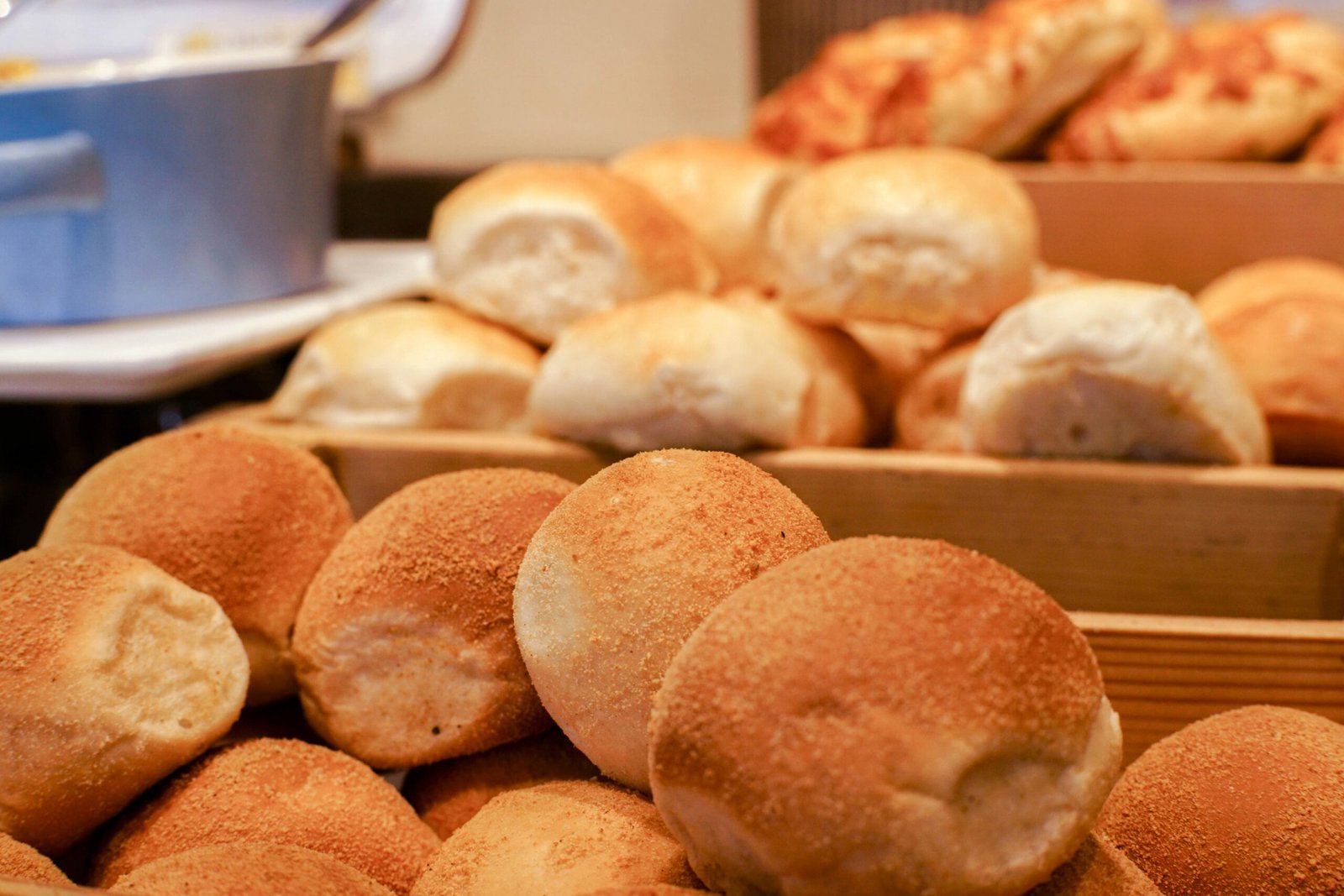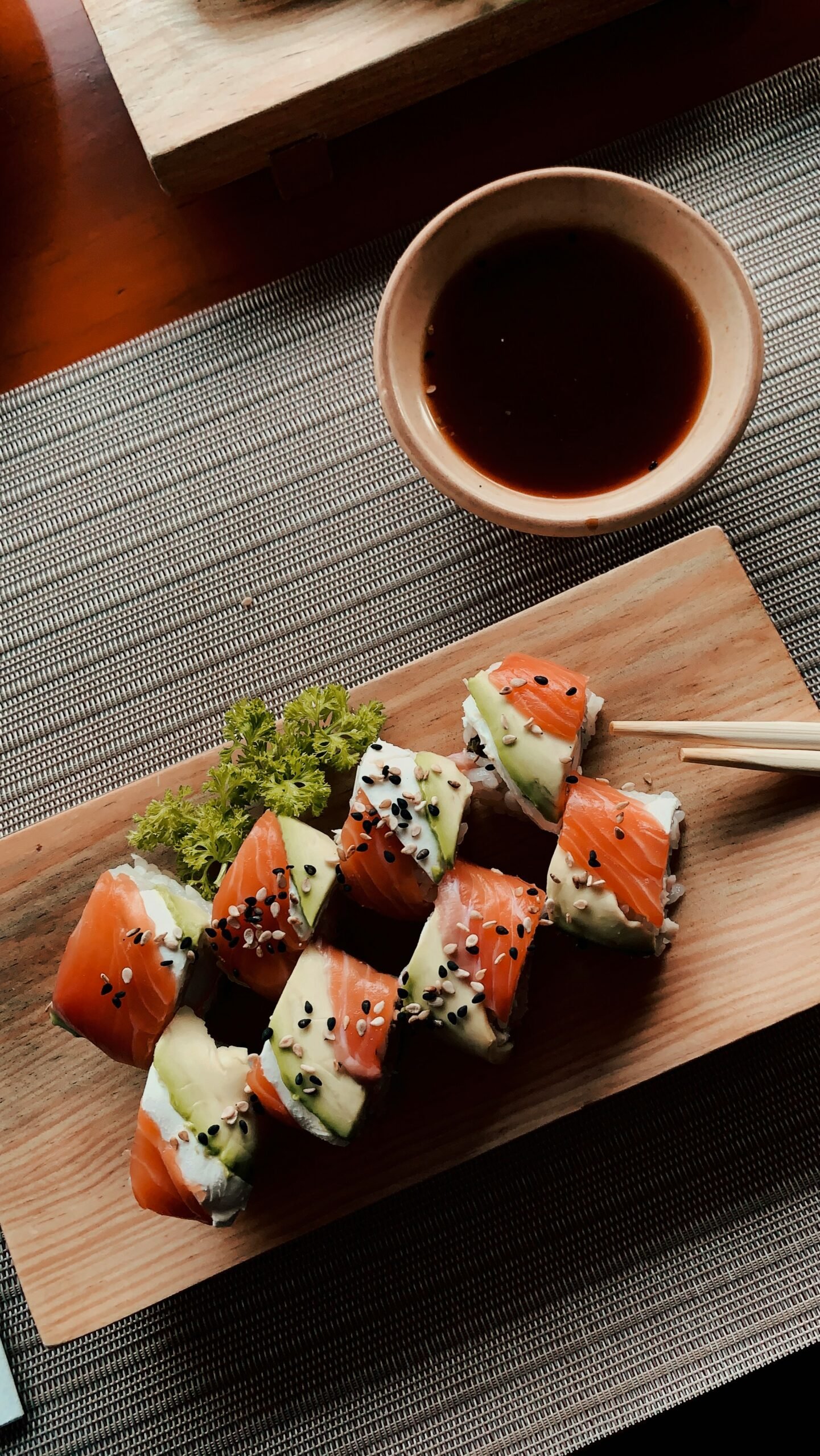
Asian buffets offer a unique and immersive dining experience, distinct from traditional restaurant settings. Unlike conventional dining where one selects a single entrée, Asian buffets allow patrons to indulge in a diverse array of dishes spanning multiple cuisines. This culinary format is designed to cater to varied tastes and preferences, providing an opportunity to sample a plethora of flavors in one sitting.
Typically, an Asian buffet features a broad spectrum of appetizers, main courses, and desserts, representing the rich culinary traditions of countries such as China, Japan, Thailand, and India. Appetizers might include popular items like spring rolls, sushi, dim sum, and satay, each offering a glimpse into the diverse cooking techniques and ingredients used across Asia. The main course selection is often extensive, showcasing iconic dishes such as General Tso’s chicken, pad Thai, teriyaki salmon, and tikka masala. These dishes are prepared with a variety of spices, herbs, and sauces that highlight the unique flavors of each cuisine.
Desserts at an Asian buffet are equally varied, often including delicacies like mochi, mango sticky rice, gulab jamun, and Chinese egg tarts. Such a vast and varied spread ensures that there is something to satisfy every palate, from the adventurous foodie eager to explore new tastes to those who prefer familiar favorites. The buffet setting also encourages diners to experiment with different dishes, promoting a deeper appreciation for the culinary diversity of Asian cultures.
Overall, an Asian buffet is more than just a meal; it is an exploration of the rich and varied culinary landscapes of Asia. It offers an ideal setting for both casual dining and special occasions, providing a communal atmosphere where diners can share and enjoy a wide array of dishes. As we delve deeper into the specifics of various Asian cuisines in the following sections, readers will gain a comprehensive understanding of what makes each one unique and how they collectively contribute to the delightful experience of an Asian buffet.
The Diversity of Asian Cuisines
Asian cuisine is a vibrant and multifaceted culinary domain, reflecting the rich cultural heritage of its countries. Each nation within Asia boasts a unique culinary tradition, characterized by distinctive flavors, ingredients, and cooking techniques. This diversity is epitomized in Asian buffets, where an array of dishes from China, Japan, Korea, Thailand, and India converge, creating an unparalleled gastronomic experience.
Chinese cuisine, for instance, is renowned for its balance of flavors and textures. Ingredients such as soy sauce, ginger, garlic, and sesame oil are staples, contributing to the depth and complexity of dishes like Kung Pao chicken and Peking duck. The dining experience is often communal, with a variety of dishes shared among diners, reflecting the importance of family and togetherness in Chinese culture.
Japanese cuisine, on the other hand, emphasizes simplicity and precision. Fresh, high-quality ingredients are paramount, exemplified by sushi and sashimi. The artful presentation and meticulous preparation techniques highlight the Japanese philosophy of beauty in simplicity. Additionally, the use of umami-rich ingredients like miso and seaweed adds a unique depth to Japanese dishes.
Korean cuisine is distinguished by its bold and robust flavors. Fermented ingredients such as kimchi and gochujang (red chili paste) are integral, imparting a characteristic tang and heat to dishes. Korean BBQ, with its marinated meats and interactive grilling experience, is a popular feature in many Asian buffets, allowing diners to savor the rich, smoky flavors unique to this cuisine.
Thai cuisine offers a harmonious blend of sweet, sour, salty, and spicy flavors. Ingredients like lemongrass, kaffir lime leaves, and galangal contribute to the aromatic and vibrant nature of Thai dishes. Signature dishes such as Tom Yum soup and Pad Thai are favorites, showcasing the balance and complexity that Thai cuisine is known for.
Indian cuisine, with its extensive use of spices, offers a sensory-rich experience. From the creamy and fragrant curries of the north to the fiery and tangy dishes of the south, Indian cuisine is a celebration of bold flavors and diverse ingredients. The use of spices such as cumin, coriander, and turmeric not only enhances the taste but also provides numerous health benefits.
Asian buffets bring together these diverse culinary traditions, offering patrons a rich tapestry of tastes and textures. Each visit is an opportunity to explore and indulge in the myriad flavors that Asian cuisine has to offer, making it a feast for both the palate and the soul.
Popular Dishes to Try at an Asian Buffet
Asian buffets are a culinary treasure trove, offering a diverse array of dishes that reflect the rich and varied cultures of Asia. Among the standout selections, sushi is a perennial favorite. Originating from Japan, sushi encompasses a range of styles, from nigiri—slices of raw fish atop vinegared rice—to maki rolls, featuring various fillings like cucumber, avocado, and seafood, wrapped in seaweed. The delicate balance of flavors and textures makes sushi a must-try dish at any Asian buffet.
Dim sum, a staple of Cantonese cuisine, is another highlight. These bite-sized portions, traditionally served in steamer baskets, include a variety of dumplings, buns, and rolls. Popular choices such as shrimp dumplings (har gow) and barbecue pork buns (char siu bao) offer a tantalizing mix of savory and slightly sweet flavors, showcasing the skillful artistry of dim sum chefs.
From Thailand, pad thai stands out with its harmonious blend of sweet, sour, salty, and spicy tastes. This stir-fried noodle dish is typically made with rice noodles, tofu or shrimp, bean sprouts, and eggs, all tossed in a tangy tamarind sauce and garnished with crushed peanuts and lime. Its vibrant flavors and satisfying texture make it a crowd-pleaser at any buffet.
Indian cuisine also makes a notable contribution with dishes like tandoori chicken. Marinated in a mixture of yogurt and spices such as cumin, coriander, and turmeric, the chicken is then roasted in a tandoor oven, resulting in a smoky, charred exterior and juicy interior. Its bold, aromatic flavors make it an irresistible choice for buffet-goers.
Other popular buffet items include Chinese stir-fries, Korean barbecue, and Vietnamese pho. These dishes, with their unique flavor profiles and cultural significance, offer diners the opportunity to explore and enjoy the culinary diversity of Asia. Whether you’re a fan of spicy, savory, or sweet flavors, an Asian buffet is sure to have something to delight your palate.
The Art of Presentation
The presentation of food in an Asian buffet is a crucial element that elevates the dining experience to an art form. Asian cuisines are renowned for their meticulous attention to detail, not only in flavor but also in visual appeal. The vibrant colors, artistic plating, and meticulous arrangement of dishes are central to this tradition, creating a feast for the eyes even before the first bite is taken.
One of the most notable aspects of Asian buffet presentation is the use of vibrant colors. Ingredients are chosen not only for their taste but also for their visual impact. Fresh vegetables, aromatic herbs, and colorful spices are combined in ways that create a visual symphony on the plate. This focus on color is deeply rooted in the cultural significance of balance and harmony, which are core principles in many Asian philosophies.
Artistic plating is another hallmark of Asian buffets. Chefs take great care in arranging food items in aesthetically pleasing ways, often drawing inspiration from nature. Delicate garnishes, intricate carvings, and thoughtfully placed elements transform each dish into a work of art. This attention to detail reflects a cultural reverence for beauty and artistry, which is celebrated in many Asian traditions.
The arrangement of dishes in an Asian buffet is also thoughtfully considered to enhance the overall dining experience. Items are often grouped by flavor profiles, cooking techniques, or regional origins, allowing diners to easily navigate the diverse offerings. This organized approach not only makes the buffet more visually appealing but also helps diners appreciate the rich culinary heritage of Asia.
In various Asian cultures, the presentation of food holds significant cultural importance. It is a way of showing respect to guests, celebrating special occasions, and expressing creativity. The meticulous presentation in Asian buffets is a testament to these cultural values, making each dining experience both delightful and memorable.
Health Benefits of Asian Cuisine
Asian cuisine is renowned not only for its diverse flavors but also for its significant health benefits. A key feature of many Asian dishes is the abundant use of fresh vegetables, which are packed with essential vitamins, minerals, and dietary fiber. These vegetables, often stir-fried or steamed, retain much of their nutritional value, contributing to a balanced and wholesome diet.
Lean proteins are another cornerstone of Asian cuisine, with seafood, chicken, and tofu frequently making their way into dishes. Seafood, in particular, is a rich source of omega-3 fatty acids, which are known for supporting heart health and reducing inflammation. Additionally, fish like salmon and mackerel are high in essential nutrients such as vitamin D and selenium, which play critical roles in maintaining overall health.
Herbs and spices are integral to the flavor profile and health benefits of Asian cuisine. Turmeric, a common spice in many Asian recipes, is celebrated for its anti-inflammatory properties, largely due to the active compound curcumin. Regular consumption of turmeric can help reduce inflammation and may lower the risk of chronic diseases such as heart disease and cancer. Similarly, ginger, another popular ingredient, is known for its ability to aid digestion and alleviate nausea, making it a staple in many Asian dishes.
Green tea, often served alongside meals in various Asian cultures, is another powerhouse of health benefits. Rich in antioxidants, particularly catechins, green tea helps combat oxidative stress and can improve brain function, support fat loss, and lower the risk of certain cancers. Regular consumption of green tea can also enhance cardiovascular health by improving blood flow and lowering cholesterol levels.
Incorporating the nutritional elements of Asian cuisine into one’s diet can lead to a myriad of health benefits. From the anti-inflammatory and antioxidant properties of herbs and spices to the nutrient-dense profile of seafood and vegetables, Asian dishes offer a delicious and healthful way to nourish the body.
Tips for Navigating an Asian Buffet
Navigating an Asian buffet can be a delightful yet overwhelming experience due to the vast array of dishes available. To make the most out of your dining experience, it is essential to approach the buffet line with a strategy in mind. Begin by taking a leisurely walk around the buffet to survey all the offerings. This preliminary inspection helps you identify the dishes you are most excited to try and prioritize them accordingly. Pay close attention to the presentation and freshness of each dish. Fresh ingredients and vibrant colors are good indicators of quality.
When building your plate, aim for a balanced selection that incorporates a variety of flavors and textures. Start with lighter options such as sushi, sashimi, or salads. These dishes are not only refreshing but also allow you to appreciate the intricate flavors without feeling too full. Next, move on to more substantial items like stir-fries, dim sum, and noodle dishes. Balancing your plate with different textures—crunchy, soft, and chewy—can enhance your overall dining experience.
One of the joys of an Asian buffet is the opportunity to try new and exotic dishes. However, it is crucial not to overwhelm your palate by mixing too many strong flavors at once. Take small portions of unfamiliar dishes to sample them first. If you find something you particularly enjoy, you can always go back for more. This approach allows you to explore new tastes without committing to a full serving.
Hydration is another key aspect to consider. Asian cuisine often includes a variety of salty and spicy dishes, so keep a glass of water or tea nearby to cleanse your palate between courses. This practice not only refreshes your taste buds but also helps to prevent dehydration.
By following these tips, you can enjoy a well-rounded and satisfying meal at an Asian buffet, making the most out of the diverse and delicious offerings available.
Pairing Drinks with Asian Cuisine
When indulging in the diverse and flavorful offerings of an Asian buffet, the right beverage can make a significant difference in enhancing your dining experience. Asian cuisine, known for its complex and varied flavors, calls for drinks that can balance and complement these tastes. Traditional choices such as sake, green tea, and jasmine tea have long been favored for their ability to harmonize with the rich and savory dishes, while modern pairings like craft beers and wines add a contemporary twist to the dining table.
Sake, a Japanese rice wine, is a traditional beverage that pairs exceptionally well with many Asian dishes, particularly sushi and sashimi. Its smooth and clean taste enhances the umami flavors of the food without overpowering them. Serving sake slightly warm or chilled can accentuate different flavor profiles, making it a versatile option for various dishes.
Green tea and jasmine tea are other classic options that offer a refreshing counterbalance to the often robust and spicy flavors found in Asian cuisine. Green tea, with its slightly bitter and grassy notes, works well to cleanse the palate, making it an excellent choice with heavier and fried items. Jasmine tea, known for its fragrant and floral aroma, complements lighter dishes and seafood, providing a soothing finish to each bite.
For those looking to explore modern pairings, craft beers and wines offer exciting alternatives. The crisp and hoppy notes of craft beers can cut through the richness of dishes like Korean barbecue or Peking duck, while light and fruity wines such as Riesling or Sauvignon Blanc can enhance the flavors of Thai and Vietnamese cuisine. These beverages not only complement the food but also introduce new flavor dimensions that can elevate the overall dining experience.
Ultimately, the key to successfully pairing drinks with Asian cuisine lies in understanding the flavor profiles of both the food and the beverages. Whether you opt for traditional or modern options, the right drink can transform your meal into a truly memorable feast, allowing you to fully appreciate the intricate and delightful flavors of Asian cuisine.
Conclusion: Embracing the Asian Buffet Experience
Asian buffets offer a unique and diverse culinary experience that captures the essence of Asia’s rich gastronomic heritage. From the intricate flavors of Japanese sushi to the bold and vibrant dishes of Thai cuisine, Asian buffets provide an unparalleled opportunity to explore a variety of tastes and textures. The versatility of the dishes ensures that there is something to satisfy every palate, making it an ideal dining option for both seasoned food enthusiasts and those new to Asian cuisine.
The appeal of an Asian buffet lies not only in the variety but also in the quality and authenticity of the dishes. Each dish is crafted with care, using traditional ingredients and cooking methods that have been passed down through generations. This dedication to authenticity ensures that diners can experience the true flavors of Asia, right at their dining table. Whether it’s the aromatic spices of Indian curries, the delicate balance of flavors in Chinese dim sum, or the hearty warmth of Korean barbecue, an Asian buffet promises a feast that is both satisfying and memorable.
Moreover, Asian buffets are a celebration of cultural diversity and culinary innovation. They bring together an array of dishes from different regions, allowing diners to embark on a gastronomic journey across Asia. This blend of tradition and innovation fosters a deeper appreciation for the culinary arts and encourages diners to expand their culinary horizons.
We invite you to immerse yourself in the Asian buffet experience. Discover new flavors, indulge in your favorite dishes, and share your experiences with others. Join us in celebrating the rich tapestry of Asian cuisine and the joy of buffet dining. Share your stories and favorite dishes in the comments below; your culinary journey might inspire others to embark on their own.



